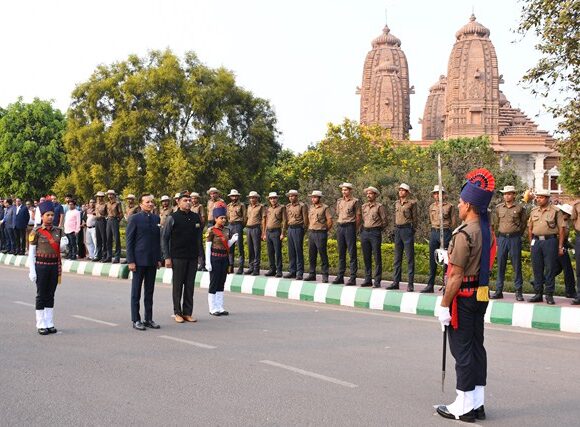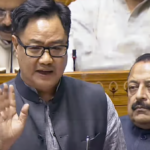Need for Proper Planning and Implementing Water Resource Projects

Padmashree Prof. Dr. P. K. Jena
Water is a prime natural resource and is very essential for all living beings. It is a basic human need and very essential for our socio economic developments. All over the world due to increase in population along with rapid industrialization, the need for water is increasing fast. Every year nearly 500,000 km3 water evaporate from water bodies on the planet and about 74,000 km3 per year evaporate from soil and vegetation, out of these 458,000 km3 goes back to the ocean as rain. It has been estimated that, out of the total rain fall on land amounting to 118,000 km3 again nearly 43,000 km3 of fresh water flows back to oceans. In view of this, we have got a great scope to refrain most of the fresh water from going back to ocean and saving and utilize those by applying various techniques such as harvesting rain water on the surface, recharging the aquifers by the rain water, developing the wetlands, maintaining the river basin to accommodate more water, constructing small dams at suitable sites on different rivers etc. In addition to this, necessary steps have to be taken to avoid the pollutants to pollute the fresh water bodies and making proper arrangement for scientifically transporting water for various purposes with minimum wastes. Agriculture being the major water consuming sector, scientific methods should be developed to maximize the utilization of water for agricultural production throughout the year.
It is suggested that, during planning and implementation of water resource development and conservation projects, the following important aspects as summarized below should be taken into consideration.
a) Surface and Ground Water Development :-
Integrated and coordinated development of surface water and ground water resources and their conjunctive use should be defined right from the project planning stage and form an integral part of the project implementation.
b) Drinking Water for all concerned : –
Adequate safe drinking water facilities should be planned and provided for all the people concerned throughout the year. In this regard, water from deep bore wells should be mostly earmarked for drinking purposes.
c) Irrigation : –
Irrigation planning either in an individual project or a basin as a whole should take into consideration, the quantum of land, cost effective irrigation options, appropriate irrigation techniques for optimizing water use, benefits of irrigation to a larger number of families, need to maximize production etc.
d) Resettlement and Rehabilitation : –
Optimal use of water resources necessitates construction of storage may be in form of small dams, where resettlement and rehabilitation issues come into picture. Therefore, careful planning and implementation necessary to ensure that construction and rehabilitation activities are implemented smoothly.
e) Financial and Physical Sustainability : –
Water charges for various uses should be fixed in such a manner, that it covers at least the operation and maintenance charges for providing water. It should also cover a part of capital cost. However, the subsidy on water charges for poor section of the society should be taken into consideration.
f) Participated Approach to Water Resource Management : –
In addition to Government agencies, the users and other stake holders should be associated in various aspects of planning, implementation and management of water resource scheme. Necessary legal and institutional changes should be made at various levels for the purpose as far as possible. The role of women should be ensured in framing and implementation of various projects.
g) Private Sector Participation : –
Private sector participation should help in a big way in introducing new ideas, generating financial resources, introducing corporate management, improving service efficiency and accountability to users.
h) Water Quality and Quantity : –
Both surface and ground water should be regularly monitored for quality and quantity. Effluents should be treated to acceptable levels before discharging those into natural streams. Minimum flow should be ensured in perennial streams for maintaining ecology and social consideration. Principle of “polluter pays” should be followed in management of polluted water. Necessary legislation should be made for preservation of existing water bodies.
i) Water Zoning : –
In National as well as state levels, there should be a water zoning and the economic activities should be guided accordingly. Industrial and urban developments should be regulated in accordance with such zoning.
j) Conservation of Water : –
Necessary plan should be made to conserve water resource. Its availability should be augmented by maximizing retention, eliminating pollution and minimizing losses. Efficiency of utilization of water should be optimized. Awareness of water as scarce resource should be fostered.
k) Flood Control and Management : –
There should be a master plan for flood control and management for each flood prone basin. Adequate flood cushions should be provided in water storage projects. There should be strict regulation and economic activity in flood plain zones along with flood proofing to minimize loss of life and property. Flood forecasting activities should be modernized.
l) Land Erosion by Sea or River : –
The erosion of land by sea or river should be minimized by suitable cost effective measures. Each costal state should prepare a comprehensive costal management plan keeping in view the environmental and ecological impacts and regulate developmental activities accordingly.
m) Drought Prone Area Development : –
Drought associated problems should be minimized through soil moisture conservation measures, rain water harvesting, development of ground water potential, transfer of surface water from surplus areas, development of pastures, forestry etc. which are relatively less water demanding.
n) Water Sharing : –
Water sharing among the states should be guided by a national prospective plan by taking into consideration water resource availability and needs within the river basin. The inter-state water disputes acts should be suitably reviewed time to time and amended for timely solving water disputes.
o) Monitoring of Projects : –
Close monitoring of projects should be done to remove any bottle neck to implement the projects in time. There should be continuous monitoring and evaluation to follow up the performance and socio economic impacts of the project.
p) Performance Improvement : –
Allocation of funds under water resource sectors should be reprioritized to ensure that the funds required for development as well as for operation and maintenance of facilities are available in time.
q) Maintenance and Modernization : –
Structures and systems created in water resource projects should be properly maintained for which financial provision should be made in the annual budget. Regular monitoring of structures and systems should be made and modernization programme should be undertaken as and when necessary.
r) Safety of Structures : –
Proper organizational arrangement both at National and State levels should be made to ensure safety of storage dams and other water related structures. Dam safety legislation should be enacted to ensure proper inspection, maintenance and surveillance of existing dams and to ensure proper planning, design and construction of new ones.
s) Science and Technology Input : –
For effective and economic management of water resources, advance science and technology in related areas should be infused into the system to make the programmes techno economically viable.
t) Training of Personnel : –
In order to plan, implement and monitor the projects properly, training should be given to involved personnel in areas of project planning and formulation, project management, operation, management of water distribution system etc.
An integrated and multi disciplinary approach has to be made in planning, formulating, clearing and implementing water resource development and conservation projects, so that all sections of people get benefited throughout the year. The water project planning should give special attention to the needs of weaker section of society. The involvement and participation of beneficiaries and other stake holders should be effected right from the project planning stage through its implementation.
The author is former Director General, Council of Scientific & Industrial Research, India). He is at present Chairman of Institute of Advance Technology & Environmental Studies (IATES) and
President, Natural Resources Development Foundation (NRDF). He can be reached at Email: prof.pkjena_iates@yahoo.com






